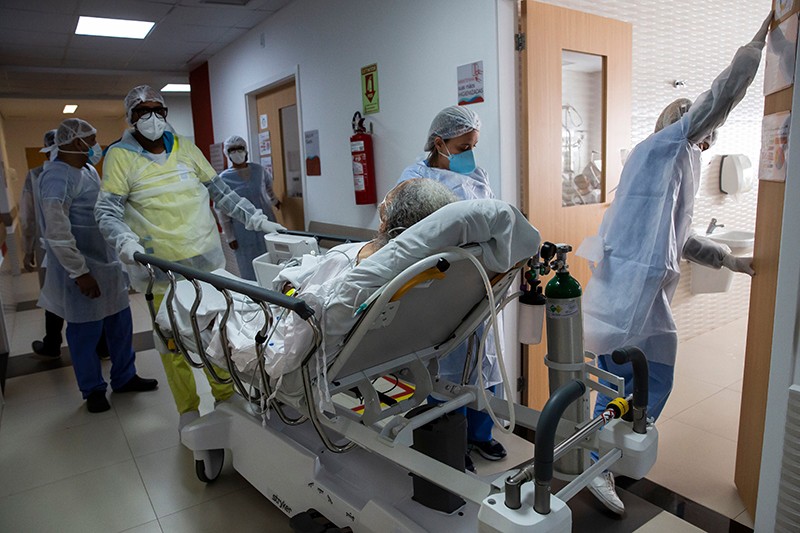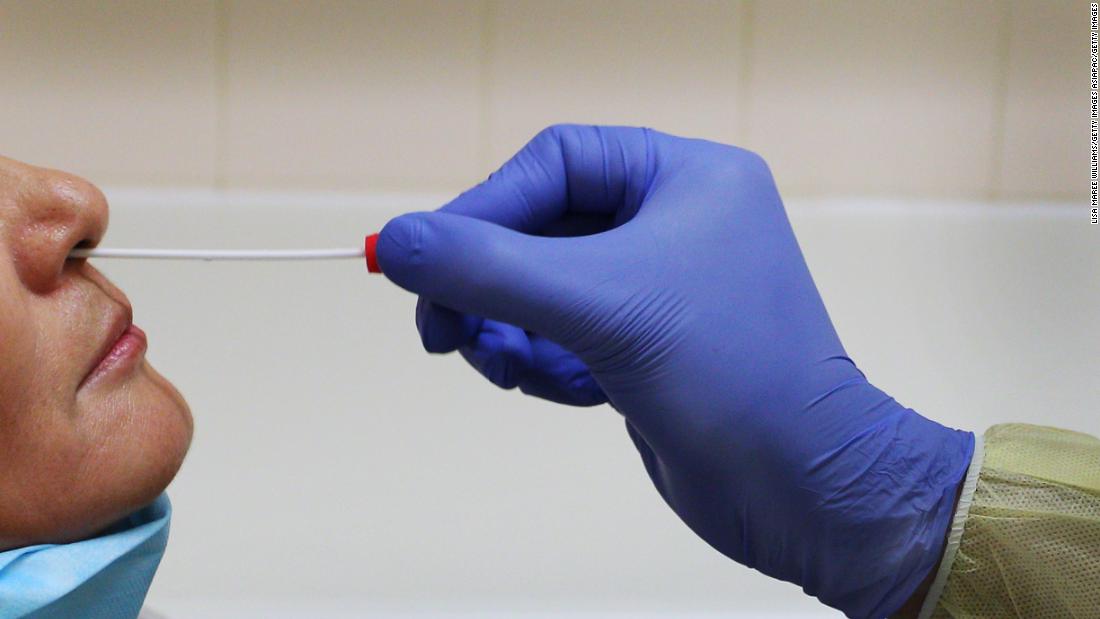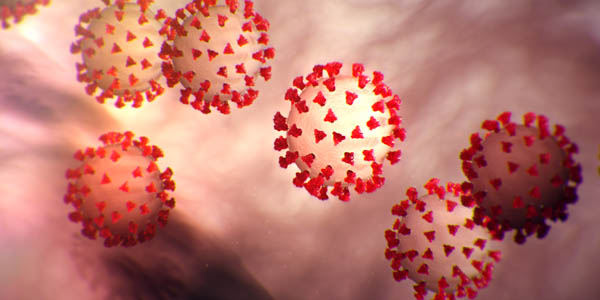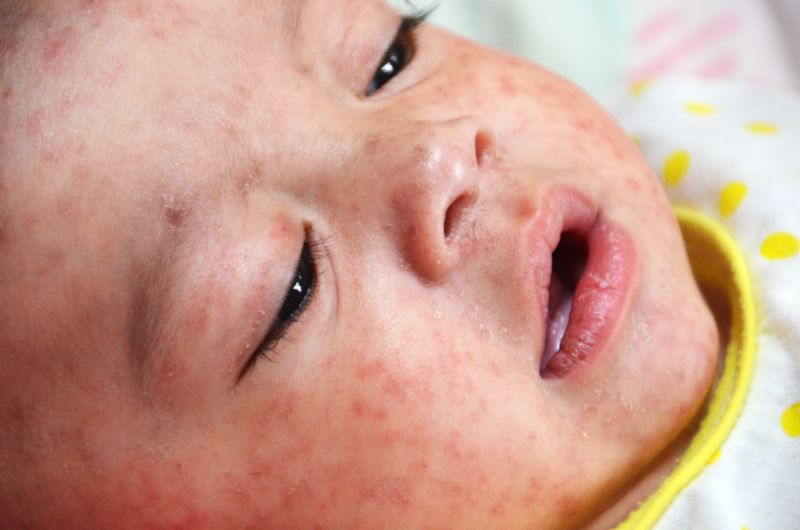By LAURA UNGAR
March 30, 2022 GMT
GRAND PORTAGE, Minn. (AP) — To administer this COVID test, Todd Kautz had to lie on his belly in the snow and worm his upper body into the narrow den of a hibernating black bear. Training a light on its snout, Kautz carefully slipped a long cotton swab into the bear’s nostrils five times.
For postdoctoral researcher Kautz and a team of other wildlife experts, tracking the coronavirus means freezing temperatures, icy roads, trudging through deep snow and getting uncomfortably close to potentially dangerous wildlife.
They’re testing bears, moose, deer and wolves on a Native American reservation in the remote north woods about 5 miles from Canada. Like researchers around the world, they are trying to figure out how, how much and where wildlife is spreading the virus.
Scientists are concerned that the virus could evolve within animal populations – potentially spawning dangerous viral mutants that could jump back to people, spread among us and reignite what for now seems to some people like a waning crisis.
The coronavirus pandemic has served as a stark and tragic example of how closely animal health and human health are linked. While the origins of the virus have not been proven, many scientists say it likely jumped from bats to humans, either directly or through another species that was being sold live in Wuhan, China.
And now the virus has been confirmed in wildlife in at least 24 U.S. states, including Minnesota. Recently, an early Canadian study showed someone in nearby Ontario likely contracted a highly mutated strain from a deer.
“If the virus can establish itself in a wild animal reservoir, it will always be out there with the threat to spill back into the human population,” said University of Minnesota researcher Matthew Aliota, who is working with the Grand Portage Reservation team.
E.J. Isaac, a fish and wildlife biologist for the reservation that’s home to the Grand Portage Ojibwe, said he expects the stakes to get even higher with the start of spring, as bears wake from hibernation and deer and wolves roam to different regions.
“If we consider that there are many species and they’re all intermingling to some extent, their patterns and their movements can exponentially increase the amount of transmission that could occur,” he said.
INTO THE WILD
Their research is meant to ward off such unwelcome surprises. But it carries its own set of risks.
Seth Moore, who directs the reservation biology and environment department, recently almost got bitten by a wolf.
And they sometimes team with a crew from the Texas-based company Heliwild to capture animals from the air. One chilly late-winter afternoon, the men climbed into a small helicopter with no side doors that lifted above the treetops. Flying low, they quickly spotted a deer in a forest clearing. They targeted the animal from the air with a net gun and dropped Moore off.
Wind whipped at his face as he worked in deep snow to quickly swab the deer’s nose for COVID, put on a tracking collar and collect blood and other biological samples for different research.
Wildlife experts are searching for the virus that causes COVID-19 in deer, bears, moose and wolves in Minnesota's north woods. They are among researchers around the world trying to figure out how and where wildlife is spreading the coronavirus. (AP Video/Emma H. Tobin)
The men capture moose in much the same way, using tranquilizer darts instead of nets. They trap wolves and deer either from the air or on the ground, and trap bears on the ground.
They knew of the young male bear they recently tested because they had already been tracking it. To get to the den, they had to take snowmobiles to the bottom of a hill then hike a narrow, winding path in snow shoes.
When Kautz crawled part-way into the den, a colleague held his feet to pull him out quickly if necessary. The team also gave the animal a drug to keep it sleeping and another later to counteract the effects of the first.
To minimize the risk of exposing animals to COVID, the men are fully vaccinated and boosted and get tested frequently.
The day after testing the bear, Isaac packed their samples to send to Aliota’s lab in Saint Paul. The veterinary and biomedical researcher hopes to learn not just which animals are getting infected but also whether certain animals are acting as “bridge species” to bring it to others. Testing may later be expanded to red foxes and racoons.
It’s also possible the virus hasn’t reached this remote location – yet. Since it’s already circulating in the wilderness of Minnesota and nearby states, Aliota said it’s only a matter of time.
LOOKING FOR MUTANTS
Close contact between humans and animals has allowed the virus to overcome built-in barriers to spread between species.
To infect any living thing, the virus must get into its cells, which isn’t always easy. Virology expert David O’Connor likens the process to opening a “lock” with the virus’ spike protein “key.”
“Different species have different-looking locks, and some of those locks are not going to be pickable by the key,” the University of Wisconsin-Madison scientist said.
But other locks are similar enough for the virus to enter an animal’s cells and make copies of itself. As it does, it can randomly mutate and still have a key that fits in the human lock. That allows it to leap back to humans through close contact with live animals, scientists believe.
Although spillback is rare, it only takes one person to bring a mutated virus into the realm of humans.
Some think the highly mutated omicron variant emerged from an animal rather than an immune-compromised human, as many believe. Virologist Marc Johnson of the University of Missouri is one of them, and now sees animals as “a potential source of pi,” the Greek letter that may be used to designate the next dangerous coronavirus variant.
Johnson and his colleagues found strange coronavirus lineages in New York City sewage with mutations rarely seen elsewhere, which he believes came from animals, perhaps rodents.
What scientists are most concerned about is that current or future variants could establish themselves and multiply widely within a reservoir species.
One possibility: white-tailed deer. Scientists found the coronavirus in a third of deer sampled in Iowa between September 2020 and January 2021. Others found COVID-19 antibodies in a third of deer tested in Illinois, Michigan, New York and Pennsylvania. Infected deer generally have no symptoms. Testing in many other wild species has been limited or absent.
“It’s possible that the virus is already perhaps circulating in multiple animals,” said virology expert Suresh Kuchipudi of Pennsylvania State University, an author of the Iowa deer study. If unmonitored, the virus could leave people “completely blindsided,” he said.
CAN IT BE STOPPED?
Ultimately, experts say the only way to stop viruses from jumping back and forth between animals and humans — extending this pandemic or sparking a new one — is to tackle big problems like habitat destruction and illegal wildlife sales.
“We are encroaching on animal habitats like we have never before in history,” Aliota said. “Spillover events from wild animals into humans are, unfortunately I think, going to increase in both frequency and scope.”
To combat that threat, three international organizations — the United Nations Food and Agriculture Organization, the World Organization for Animal Health and the World Health Organization — are urging countries to make COVID surveillance in animals a priority.
In Grand Portage, Aliota’s collaborators continue to do their part by testing as many animals as they can catch.
With icy Lake Superior sparkling through the evergreens, Isaac slipped his hand beneath the netting of a deer trap. A colleague straddling the animal lifted its head off the snowy ground so that Isaac could swab its nostrils.
The young buck briefly lurched its head forward, but kept still long enough for Isaac to get what he needed.
“Nicely done,” his colleague said as Isaac put the sample into a vial.
When they were finished, they gently lifted the trap to let the deer go. It bounded into the vast forest without looking back, disappearing into the snowy shadows.
___
The Associated Press Health and Science Department receives support from the Howard Hughes Medical Institute’s Department of Science Education. The AP is solely responsible for all content.
Adblock test (Why?)
COVID-19 - Latest - Google News
March 30, 2022 at 07:50PM
https://ift.tt/aYufX1U
Into the wild: Animals the latest frontier in COVID fight - The Associated Press - en Español
COVID-19 - Latest - Google News
https://ift.tt/5vMAVcb












